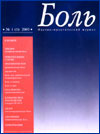Non-steroidal anti-inflammatory analgesics guidelines for nsaid use in acute pain
David J Rowbotham, Professor of Anaesthesia & Pain Management. University of Leicester. UK
What are clinical guidelines?
Clinical guidelines are systematically developed statements which assist in decision making about appropriate
health care for specific clinical conditions.
Why produce guidelines?
After initial scepticism, there are several reasons why guidelines are becoming more accepted by the
medical profession. Standards of clinical practice are being scrutinised increasingly and there is pressure
on clinicians to deliver "evidence-based medicine". During the last decade, concern started to be expressed
with respect to variations in clinical practice between hospitals, regions and countries - indeed, even
between clinicians within the same hospital. In many areas of medicine, clinical management is becoming
more complex with a vast supporting literature. Throughout Europe, patients are becoming better informed
about medical matters and are enquiring more frequently about the reasoning behind their clinical management.
Finally, the cost of health-care services in all countries is increasing and there is a growing emphasis
on the effective use of clinical resources.
Guidelines can be very helpful in addressing these issues. They can also represent an educational resource
and assist in the design of audit or research.
What is special about clinical guidelines?
Guidelines on clinical management have been published for centuries. However, even in many of those published
recently, recommendations have been made by "expert groups" with no formal review of the literature.
They are influenced by the experts' bias and opinion. Of course, the experience and knowledge of members
of the group is vital, particularly when evidence is lacking or conflicting, but it is essential that
all evidence is reviewed.
Robust clinical guidelines review the evidence in a systematic and transparent manner and the basis of
any recommendations are made clear. For example, is a specific recommendation based on overwhelming evidence
from the literature or does it reflect the views of the panel on a subject with scanty or conflicting
evidence ?
Why the need for guidelines on the use of NSAIDs for acute pain ?
There are conflicting views on the efficacy and safety of NSAIDs and this is reflected by a wide variety
of clinical practice. A clinical guideline, based on a structured review of the literature, could clarify
the position of NSAIDs and would be beneficial to clinicians.
The Royal College of Anaesthetists Guideline for the Use of NSAIDs in the Perioperative Period
The Royal College of Anaesthetists (RCA) have produced such a guideline and it will be described in some
detail in the presentation.
Methodology
The methodology of the working party will be described in order to illustrate the mechanism by which
recommendations were produced. This includes issues such as group membership, reviewing and grading of
evidence, development and grading of recommendations, peer review and dissemination.
Recommendations A summary of the most important recommendations is given below :
Grade A. Based on the strongest evidence available, including at least one randomised trial as part of the body of literature of overall good quality :
- NSAIDs are not sufficiently effective as the sole agent after major surgery in most patients.
- They are often effective after minor or moderate surgery.
- NSAIDs often decrease opioid requirement. Significant reduction in opioid side-effects has been noted in a few studies only.
- The quality of opioid-based analgesia is often enhanced by NSAIDs.
- NSAIDs increase bleeding time and some studies have shown increased blood loss.
- In situations where there are no contraindications, NSAIDs are the drug of choice after many day-case procedures.
Grade B. Based on availability of well-conducted clinical studies but not randomised trials :
- The clinician should be aware that many important drug interactions have been reported (these are described in detail in the report).
Grade C. Based on the expert consensus of the group in the absence of studies of good quality :
- The clinical significance of a tendency to increased bleeding is unclear. It should not inhibit the use of NSAIDs in most cases if there are no specific contraindications. However, NSAIDs should not be given prior to surgery if there is an increased risk of intraoperative bleeding.
- NSAIDs should not be used in patients with pre-eclamptic toxaemia, hypovolaemia or uncontrolled hypertension.
- Intramuscular diclofenac should be avoided.
- Gastrointestinal ulceration and bleeding should be a prominent differential diagnosis in any patient receiving NSAIDs.
- NSAIDs should be avoided in renally-compromised patients.
- Renal function should be monitored regularly in all patients receiving NSAIDs after major surgery. Any upward trend in plasma urea, creatinine or potassium or reduced urine output is an indication for discontinuing NSAIDs.
- NSAIDs should be used with caution in the elderly, patients with diabetes, vascular disease and after cardiac, hepatobiliary, renal or major vascular surgery.
- NSAIDs are contraindicated in aspirin-sensitive asthma and should be used with caution in other asthmatics.
- It is impossible to give significant meaningful recommendations on the safe use of NSAIDs with epidural anaesthesia. More work is required in this area.
- Patients and/or parents should be informed of the intention to use rectal administration of NSAIDs.
Do guidelines expire ?
Guidelines should have an expiry date after which they need to be revised in order to reflect new evidence.
This is very pertinent to the RCA guidelines as they only considered the non-specific COX inhibitors.
The influence of COX-2 specific NSAIDs on the management of pain will be discussed in the this seminar.
Pain in Europe III. EFIC 2000, Nice, France, September 26-29, 2000. Abstracts book, p. 105 - 107.






